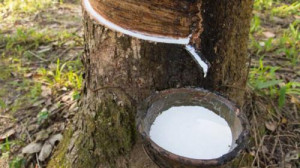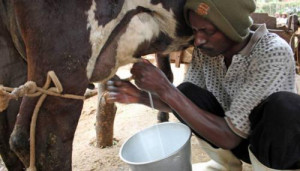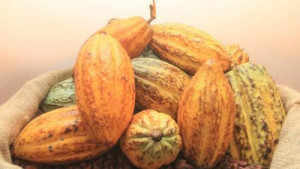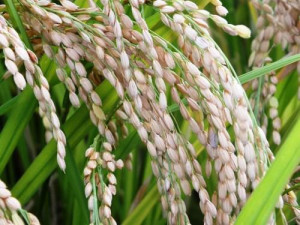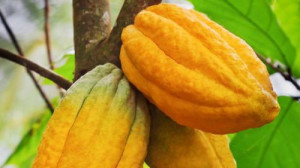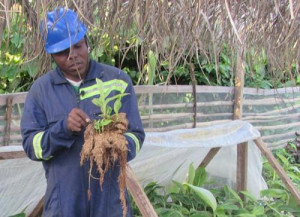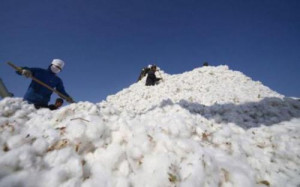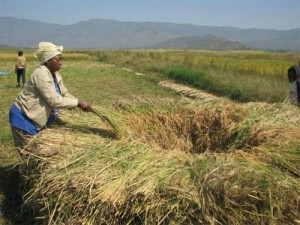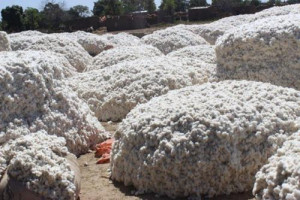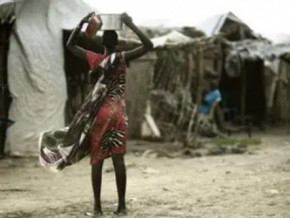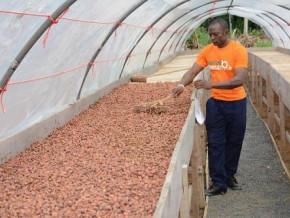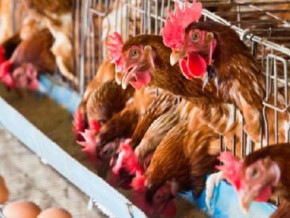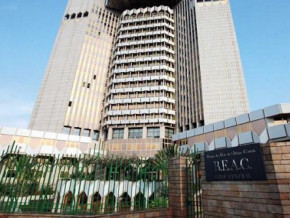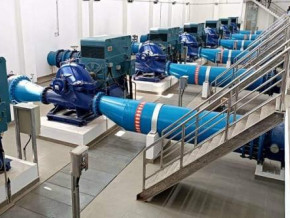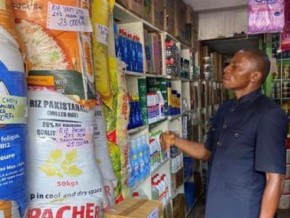
Cameroon: Rubber exports dropped by 24% in 2018, due to difficulties facing CDC
Exports of raw rubber in Cameroon shrunk by 24% last year, statistics from the National Balance of Payments Technical Committee showed.
Whilst the committee gave no reason for this decline, experts attributed it to the difficult times facing Cameroon Development Corporation (CDC), the public agro-industry that operates thousands of hectares of rubber, palm and bananas in the southwest ; a region which has been plagued by separatist violence along with the northwest for two years.
According to a report by the employers’ association -Gicam, many plantations have become training camps for the separatists and CDC employers fled fearing violence ; a situation that caused production to stop at several sites.
“We need security to protect our employees and fields from repeated attacks from people who don’t want us to prosper,” MD Franklin Ngoni Njie said, stressing that the company needs about XAF7 billion to restart rubber production. CDC aims to become a rubber exporter along with Hevecam and SudCam Hevea.
Brice R. Mbodiam
Cameroon: weak genetic performance of cows stagnates dairy production
In 2017, Cameroon’s dairy production was estimated at 239,000 tons and the livestock department -Minepia- said output has increased by an average of 7% per annum since 1994.
Despite this very low increase, the ministry said, milk production is stagnating and deficit is a bit higher than 120,000 tons per year. Hurdles to dairy production growth, according to Minepia, include poor genetic performance of cows, prevalence of diseases with a high impact on milk production in certain areas coupled with insufficient appropriation of technological innovations by producers.
As solutions, actions have been undertaken under the livestock development project, backed by development partners. These include the gradual acquisition of dairy cattle and the genetic improvement of local ones, the production of bovine animal germplasms and the structuring of distribution channels for milk collection and distribution.
S.A
Cameroon: Cocoa processed in centers of excellence fetches over XAF1,600 per Kg against XAF1,000 for average farm gate price
Whilst the overall average farm gate price of cocoa is just above XAF1,000 in Cameroon’s production areas as shown by daily data from the Sector Information System -SIF, some growers trade the crop at a bit more than XAF1,600 per kg.
The pricey cocoa, according to the trade minister Luc Magloire Mbarga Atangana, is that sold at centers of excellence for post-harvest processing set up by the cocoa-coffee inter professional council and its partners in certain production areas to improve crop quality.
“Thanks to their highly improved quality, a kilogram of beans processed in these facilities equipped with special drying equipment, is currently being traded at above 2.5 euros, or more than XAF1,600,” said Mr. Mbarga Atangana.
Leveraging this advantage, the council is intending to submit the beans of excellence at the 2019 International Cocoa Awards, and also “introduce all New Generation groups (young people recruited and supervised to rejuvenate the production force in the cocoa and coffee sectors) into the process of promoting cocoa of excellence, through the establishment of post-harvest cocoa processing centers.”
Further, the council will build more centers of excellence across the country, with the long-term aim of setting them in all 36 localities. The new generation program currently monitors more than 1,500 young cocoa growers and enabled the creation of more than 2,500 hectares of new cocoa farms in Cameroon in 7 years.
Brice R. Mbodiam
Cameroon: SEMRY plans XAF4.2bln investment in 2019
Cameroon’s rice development firm in the northern region SEMRY secured an investment of XAF4.2 billion for 2019, according to the last Board official statement.
While not much is said about the type of investment planned for the year, it seems that part of the related envelope will be allocated to the acquisition of new shelling units, the lack of which makes Cameroon exports paddy rice to Nigeria, where shelling units are widespread.
Let’s note that Cameroon’s annual rice production is barely 100,000 tons while domestic demand exceeds 300,000 tons.
BRM
228ha of new cocoa farms expected to be created in the Cameroonian central region under the New Generation Project
A group of 76 young Cameroonians from the localities of Bondjonck, Bomabom and Ntui in the central region received agricultural kits, including them in the “New Generation” program ; a scheme launched in 2012 by the cocoa-coffee inter-professional council (CICC) to rejuvenate production workforce in the sector.
In the next 3 years, these young people are required to grow, in their respective localities, 228 ha of new cocoa farms, at least three hectares for each of them. Since it was launched, the program has already trained more than 1520 young people (including 267 females), who have been able to plant more than 2500 hectares of cocoa farms in the country's production areas.
“It (the program) is seen as a key mainstay for economic growth, through the creation of decent jobs for the next generation, which will lead to a more productive and competitive cocoa production oriented towards more profitable markets,” said Luc Magloire Mbarga Atangana, the trade minister, during the new recruits’ welcoming ceremony in Bondjock.
As a reminder, “New Generation” is the result of a study by the cocoa-coffee inter-professional council, which revealed that the average age of cocoa farmers exceeded 60 years in some production areas. A solution was to train young people interested in cocoa farming on both best farming practices and production marketing techniques. At the end of the 3-year training, the new farmers who vow to produce at least 3 hectares of cocoa farms in their regions receive all needed (except land and workforce) and adequate follow-up, to become agricultural entrepreneurs, specialized in cocoa production.
Brice R. Mbodiam
Yaoundé to host Youth Agro-pastoral Entrepreneurship Summit next Feb 28 to Mar 3
Yaoundé, Cameroon’s capital, is hosting next February 28 to March 3 an international Youth Agro-pastoral Entrepreneurship Summit, co-organized by the International Fund for Agricultural Development (IFAD) and the Cameroonian government.
The meeting aims to “foster knowledge sharing with young people and public & private entities to promote efforts towards entrepreneurship, leading to the reduction of rural poverty and improved food and nutrition security,” organizers said. As well, it is an occasion to explore opportunities and possibilities in both agricultural and non-agricultural areas for the promotion of environment friendly and decent jobs.
A field workshop with young people selected during the summit will be held 2-3 March at the Agri-incubation Center of Obala, located an hour's drive from Yaoundé. IFAD believes Cameroon is one of the sub-Saharan African countries where more than 16 million young people will enter the labor market each year until 2030, mainly in rural areas.
S.A
Cemac: export prices of metal and agricultural items forecasted to grow by 5% and 2% respectively, in 2019
The world prices of agricultural products exported by Cemac countries (cocoa, coffee, cotton etc.) are expected to bounce back, growing by 2% this year, compared to late 2018 when they declined 1.9% in the fourth quarter.
Statistics provided by the central bank Beac also forecast an increase by 5% in metals’ export prices, following flat prices in Q4 2018. According to the bank, the uptick is in line with a “supply reduction outlook and the control of commercial disputes.”
BRM
Cameroon: Rice production failed to reach expectation in 2018 (600,000t)
In 2018, rice production failed to reach the volume projected by the Irrigated and Rainfed Rice Development Project (Proderip) implemented in Cameroon with the support of the Japan International Cooperation Agency (Jica).
Figures provided by Proderip showed that the maximum output is still 300,000 tons per year, while national demand is 600,000 tons. In need to offset this gap, the country spends about XAF120 billion to import rice per annum. However, Proderip keeps reassuring the government is still committed to increasing Cameroon's rice production to 750,000 tons by 2020. Once achieved, this will double the production in a year's time.
Since 2011, when the project was launched, Jica claimed it has contributed to the training of nearly 10,000 farmers and the distribution of nearly 75,000 tons of seeds. Let’s note that the second phase of Proderip, currently underway, aims to train nearly 4,000 new farmers.
S.A.
Cemac: Higher cotton output dropped export prices by 7.7% in Q4 2018
Over the last three months of 2018, cotton export prices within the Cemac region (Cameroon, Chad) shrunk by 7.7%, data compiled by the Central Bank Beac showed.
This drop, Beac explained, is the result of the “continued rise in the volume of cotton produced thanks to favorable weather”. As well, “the currencies of major agricultural commodities exporters have depreciated” during the period under consideration.
Overall, the prices of agricultural products exported by CEMAC countries fell by 1.9% in Q4 2018, cotton being the hardest-hit crop, Beac noted.
BRM
Cameroon: 14ha of millet fields destroyed by elephants in the Far North
The threat of famine looms over the populations in the villages of Guissia, Doufaya, Telgoua and Karmaye, of the department of Mayo-Danay, Far North region. Indeed, according to L’œil du Sahel, in late January, a herd of about 200 elephants destroyed 14 hectares of off-season millet fields, a cereal widely consumed in this part of Cameroon, during lean season.
“These elephants have destroyed a little over 14 hectares. If the production per hectare is estimated at 1.5 tons, the loss then totals about 21 tons,” explains Mr. Marana, the delegate of the agriculture district of Wina, which covers the villages of Doufaya, Telgoua and Karmaye.
“You will agree with me that famine is inevitable in the three villages concerned this year,” he said.
Such phenomenon, destruction of cereal fields by elephants, is recurrent in the Far North region, where conflicts between these protected species and humans are permanent, adding to the already precarious food situation in this part of the country, due to the advancing desert, which has been accelerated in recent years by climate change.
In January 2018, for example, Pierre Abolgo, the departmental delegate for agriculture and rural development for Logone-et-Chari, revealed that elephants that left Kalamaloue Park devastated nearly 10 hectares of off-season millet.
Brice R. Mbodiam
Mags frontpage
- Most read 7 days
- shared 1 month
- read 1 month


